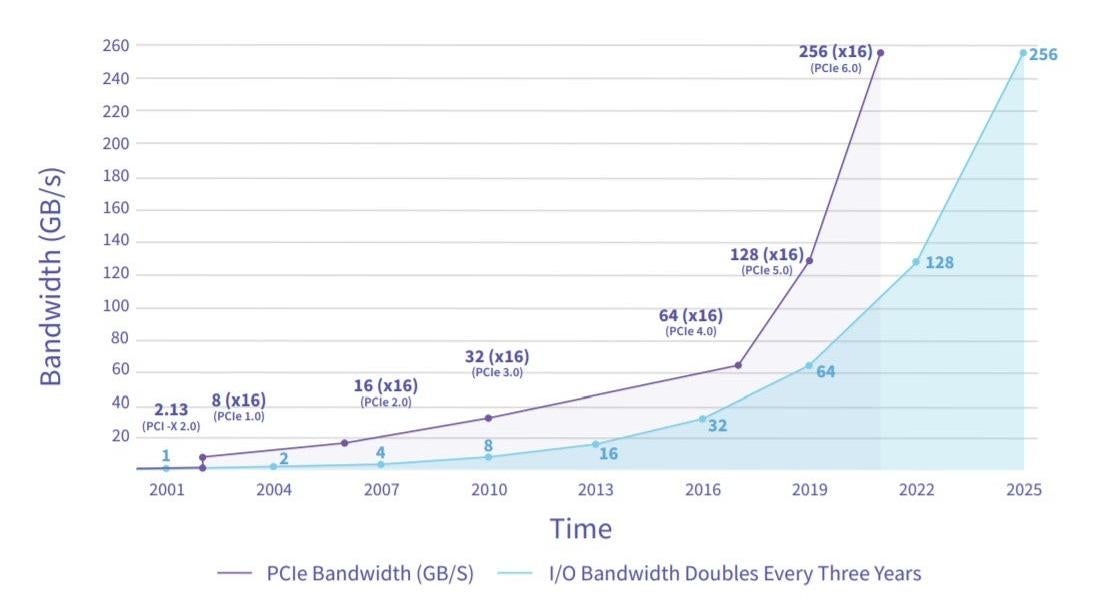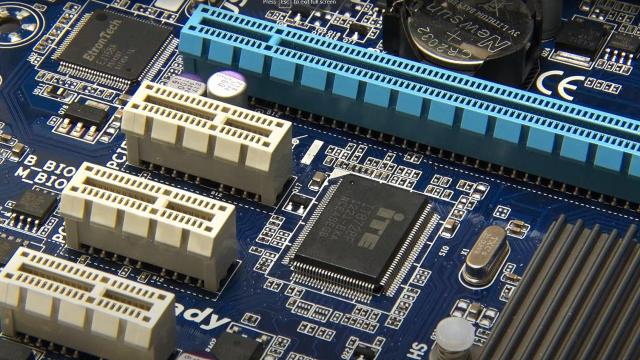We’re only now seeing widespread support for PCIe 5.0, but as is so often the case in this industry, new tech is old tech the moment it arrives. And so, the PCI Special Interest Group today released a finalised spec for PCI Express 6.0, setting the groundwork for the next (next?) generation of SSDs.
Let’s get right to the speeds, shall we? This next edition doubles raw data transfer speeds from 32 gigatransfers per second (GT/s) on PCIe 5.0 to 64GT/s on PCIe 6.0, and up to 8 GB/second in each direction or 256 GB/s on an x16 configuration.

Now that the final version of the specification has been approved, the consortium expects we’ll see the first commercial products arrive on the market in the next 12 to 18 months, which means sometime in 2023. Do note “commercial” — these ultra-fast storage devices will find their way into servers before you ever see PCIe 6.0 SSD in a consumer product. The PCI Special Interest Group says the “initial target applications” for the technology include AI and machine learning, networking and storage in data centres, industrial, automotive, and military.
That timeline is similar to what we’ve seen with PCIe 5.0; the current standard was finalised in 2019, but it wasn’t until a few weeks ago in the buildup to CES 2022 that Samsung and Adata teased the first PCI 5.0 SSDs, and those are targeted toward enterprise customers. It’s also worth noting that while Intel’s 12th-gen desktop chips support PCIe 5.0, its new mobile processors are limited to PCIe Gen 4, a decision Intel told Gizmodo was made to keep costs down, and because no PCIe Gen 5 cards were available for validation.
The new standard is a significant achievement for the PCI Special Interest Group, which reached its goal of doubling PCI Express speeds every three years since starting the spec in 2003. In this case, it did so using an entirely different signalling technology called PAM4 (Pulse Amplitude Modulation with 4 levels).
I won’t bombard you with the technical details (those who are interested can learn more here), but the folks at AnandTech say the change is “arguably the largest in the history of the standard.” And not only does it enable faster speeds, but it enables low-latency operation.
When it arrives, PCIe 6.0 will be backward-compatible with existing hardware, so components that use PCIe 5.0 or earlier will work just fine when connected to a PCIe 6.0 host and vice versa.
The new standard arrives to address the increasing applications requiring high-bandwidth, low-latency data transfers. Commercial markets have a greater need and the budgets required to be early adopters of PCIe 6.0, but eventually, the standard will find its way into consumer products like graphics cards and SSDs — just in time, I’m sure, for PCIe 7.0.
